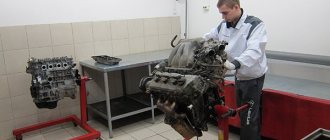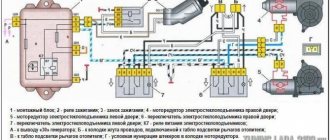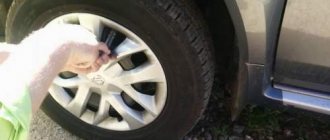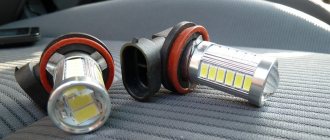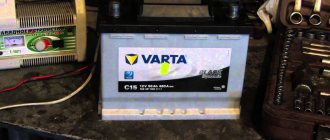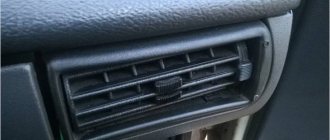The benefits of HBO have long been appreciated by millions of our compatriots; the popularity of this solution continues to grow in the context of overcoming the economic crisis. The installation of gas equipment on cars is carried out by both manufacturers and specialized workshops, and sometimes car owners even make independent attempts, in their own garage. Among car enthusiasts, the attitude towards gas equipment is ambiguous, while its use is justified by the durability and benefits of its operation, but, due to various circumstances, sometimes it becomes necessary to dismantle gas equipment on a car.
Dismantling. How and why should it be done?
Of course, the decision to remove gas equipment from a car can be called drastic, but in certain cases it is absolutely necessary, for example, when traveling abroad. As a rule, this work is carried out under the pressure of circumstances beyond the control of the owner. Let's look at the most common cases:
- The installed system is not registered as additional equipment, and the vehicle cannot be registered with the MPEO, which entails partial or complete dismantling of the gas equipment.
- The wear and tear of equipment depends on various operational indicators, and on average, according to the pros, high-quality equipment is ready to run from eighty to one hundred and twenty thousand kilometers without major repairs. But, when the condition of the system requires deep and expensive repairs, then it is worth carrying out a planned replacement, which will be more expedient and sometimes cheaper.
- The owner of the car has not previously used automotive gas equipment and now refuses to deal with its official registration and maintenance.
Advantages and disadvantages of HBO
LPG equipment is installed to save on fuel, since the price of gas is lower than the price of gasoline. After installing LPG on a car, the pros and cons can be fully assessed only after some time - after the period of test operation. Based on the experience of other drivers, the main advantages and disadvantages of such equipment are highlighted. Pros:
- propane or methane is much cheaper than other alternative fuel options;
- saving fuel used;
- possibility of parallel use of gas and gasoline;
- the engine runs longer without the need for maintenance;
- exhaust gases pollute the environment much less;
- the modern LPG system is easy to operate;
- A gas leak is not as dangerous as a gasoline leak.
There are also disadvantages, and there are quite a lot of them:
- The power of the car decreases, this is especially noticeable during acceleration;
- installation of non-staff equipment is required at your own expense;
- regular paid equipment maintenance;
- Starting in winter is carried out on gasoline;
- deprivation of free space in the trunk of a car;
- increase in vehicle weight;
- difficulties in servicing the gasoline system;
- ban on stopping in underground parking lots;
- HBO can only be installed in licensed centers;
- changes in the design of the car must be registered;
- not everyone wants to buy a car with such a system;
- There are much fewer gas filling stations than gasoline ones.
It is impossible to say for sure whether it is worth using gas as a type of fuel or remaining committed to the standard system. The decision must be made based on the functionality of the car and where it is most frequently used - occasional trips around the city or frequent long-distance trips on the highway.
Dismantling gas equipment - procedure
To decide how to remove gas equipment from a car, you need to decide whether the dismantling will be complete or partial. If everything is clear enough with the first option, the car will be returned to its original condition. The situation with the second one is somewhat different.
If you plan to save the equipment for further use, then it should be deactivated. In this case, you need to remove the cylinder, plug the line and insert the plug into the control connector. In fact, it is enough to turn off the power from the unit and remove the fuse from the rubber chip on the positive cable of the battery. The main thing is that, if sold, the price of the car will not decrease.
You might be interested >> Installing LPG on Lada Largus
To dismantle all the equipment, you will need to lift the car on a lift or drive it into a pit, and then it becomes clear how to remove the gas cylinder from the car. The general sequence of work is as follows:
- the gas must be vented completely;
- the electrics turn off;
- the lines are disconnected, the cylinder is removed, and along with it the gearbox, electronic sensors, control unit, injectors are dismantled, and the intake manifold holes are plugged;
- changing pipes in the cooling system;
- the neck is plugged.
This knowledge may be useful to remove the gas equipment from the car yourself. However, it’s still not worth doing this yourself. Times have changed, and it is better not to mess with modern technology for home-grown “Kulibins”.
Self-removal of gas equipment from a car
The question of how to remove gas equipment from a car with your own hands interests many drivers. Typically, such a need arises if the vehicle is not registered with the traffic police, or before a technical inspection.
Also, dismantling the LPG will be necessary if the driver, for certain reasons, decides to return to using liquid fuel. Before you figure out how to remove gas equipment from a car, you need to find out whether it is possible to carry out such a procedure yourself.
General information
The main task of gas equipment is to ensure the operation of the machine using gas fuel. To do this, a cylinder and auxiliary elements are installed, due to which the supply to the engine occurs. The vehicle's equipment is saving.
Methane or propane used for refueling have a lower cost compared to other types of fuel. It is also believed that LPG increases the service life of the engine, allowing the car to operate longer without breakdowns or maintenance. The advantages of using gas also include environmental friendliness and ease of operation.
Despite the large number of advantages, there are also a number of disadvantages. Often they are the reason why gas equipment is dismantled on a car. The disadvantages of gas equipment include:
- Small number of gas filling stations.
- Reduced engine power.
- Increase in vehicle weight.
- The cylinder and auxiliary equipment take up space in the trunk.
Despite the presence of obvious disadvantages, HBO is very popular. Therefore, the need for dismantling arises if there are appropriate grounds.
Reasons for withdrawal
There are many situations in which you will need to restore your car to factory specification. Often such a need arises under the influence of circumstances beyond the control of the owner of the car. The most common reasons include:
- Lack of registration with the traffic police.
- Registration of a car on which HBO was previously installed.
- Replacement with a new generation system.
- Preparing the car for sale.
- Carrying out repair work.
- Travel abroad.
Advice! In general, there are quite a lot of situations in which you need to remove HBO. However, the driver always has the opportunity to re-install.
Types of dismantling
The option for removing the HBO depends on various aspects: the reason, the specifics of the vehicle, the characteristics of the equipment used, the availability of the necessary tools and devices. In total, there are 2 types of dismantling.
These include:
- Partial. This is carried out if the gas equipment is planned to be left for subsequent use. The procedure involves temporarily deactivating the gas supply system. The cylinder is removed from the machine, the gearbox and the electronic control unit are dismantled. The remaining structural elements are retained.
- Full. The HBO is completely removed from the vehicle. After this, calibration is performed to restore original functionality.
It is important to know! When considering how to remove LPG from a car with your own hands, it should be noted that partial dismantling is a simplified procedure. This type of work does not require special equipment or additional expensive equipment.
Is self-dismantling allowed?
The ability to remove a car gas cylinder system is not limited by law. and a specific set of tools. If there are none, it is recommended to contact a service station. This helps prevent damage to the vehicle. In addition, the cost of dismantling gas equipment is significantly lower than the cost of installation.
Procedure
The stages of the procedure depend on whether the dismantling is complete or partial. It is quite difficult to remove the entire gas system from the car on your own. Therefore, only part of the equipment can be removed. Stages of partial dismantling:
- Disconnecting battery power
- Disconnecting the cylinder and reducer (the gas is first released)
- Installing the valve on the line
When considering how to remove the LPG, it is necessary to take into account that during complete dismantling it will be necessary to close the filling and supply valves, remove the fuel line, and the electronic control unit. In the intake manifold, it is necessary to block the holes made during installation of the equipment using sealant.
To make the process easier, it is recommended to watch a video on how to remove gas equipment from a car.
Removing the gas cylinder system from a passenger car and GAZelle
The sequence of actions for both types of car is almost the same. The order of execution depends on the generation of the HBO used. 1st and 2nd generation systems are the easiest to dismantle.
The gas contained inside is first removed from the cylinder. Then it is mandatory to de-energize the vehicle. To do this, simply disconnect the positive contact from the battery.
Most drivers face difficulties due to the fact that they do not know how to remove the gas cylinder from the car. The line is first disconnected, after which the container is easily disconnected.
At the connection points, caps with sealant are installed in the intake manifold. If the question concerns how to remove 4th generation gas equipment from the car yourself, then in this case you will need to dismantle the ECU unit.
Precautionary measures
Often, removing the gas supply system yourself leads to undesirable consequences. Therefore, the procedure must be performed in accordance with several fundamentally important rules. These include:
- Strict adherence to work procedures.
- There are no sources of fire near the dismantling site.
- Keep the removed cylinder hermetically sealed.
- Dismantled parts must be placed at a distance from each other.
- Long-term storage of elements is considered unsafe.
It is possible to remove the LPG without qualified assistance only if the driver has the necessary knowledge and skills for such work. Otherwise, it is better to contact a service station.
Gas equipment is very popular among motorists. However, cases often arise in which dismantling of auxiliary equipment is required. The procedure can be carried out in whole or in part. In this case, it is necessary to take into account the generation of gas equipment and the characteristics of the vehicle.
What precautions need to be taken?
It’s good when a car owner knows how to remove LPG from a car with his own hands - in this case, all work is carried out without any financial costs. What happens next?
It is not at all a rare story when the owner of a car with gas equipment independently dismantled the gas installation in his own garage, and after some time the building exploded and burned. And, in the worst case, a couple of neighboring buildings and cars turned into smoke along with it. It would be good if there were no casualties.
The whole problem is that, after dismantling according to all the rules, the gearbox, main pipelines, valves and cylinder - everything fits into a heap and moves to the basement of the garage, to the far corner, so that it doesn’t get in the way underfoot, because all this is dangerous - with gas . What could this lead to? The old cylinder rarely remains empty, and it does not close tightly. When sending “belongings” to the basement for storage, they are rarely checked for leaks, without thinking that even the slightest leak is dangerous.
You might be interested >> Gas equipment for Pajero 4
Later, the following happens - the gas is heavier in relation to air, and the cylinder stored in the basement, over the course of days, weeks, months, poisons the gas and fills the space. The day is coming when all it takes is one spark or the flick of a switch to make property not only movable, but also flying.
How to dismantle LPG from a car
The question of whether it is possible to remove the HBO from a car may arise in several cases. For example, a person cannot register a vehicle, the gas equipment is faulty, or the new owner does not want to use this type of fuel. In this case, all previously installed elements must be removed from the car with your own hands or entrusted to the work of employees of specialized centers. After dismantling, the holes are sealed and the engine injectors are re-adjusted. In this case, the car's ECU requires changes and adjustments.
A car
First, let's look at how to dismantle LPG from a passenger car with your own hands, and in what sequence you need to act. The algorithm is like this:
- Bleed gas from the lines, reducer and cylinder. This is necessary to prevent fuel leakage and accidental explosion while performing work.
- Discard the lines connected to the gas container and remove the fastenings from the vehicle frame.
- Remove the maltic valve and the filling hose, and then close the hole under the neck using a plug.
- Remove the gearbox, ECU, control unit and sensors, as well as antifreeze sleeves.
- Remove the filling/consumable line.
- Install new cooling system pipes and return to factory ones.
- Remove the gas injectors and install plugs on the intake manifold.
- Restore the wiring of the gasoline injectors.
- Place rubber plugs in the place where the body is attached and carry out the processing.
- Check the car's performance.
Above are brief instructions on how to remove LPG from a car with your own hands. The sequence of steps may vary slightly, but the general structure is as discussed above.
Freight transport
The work is similar when you need to remove the cylinder and the LPG itself from a truck with your own hands. The general algorithm of actions is as follows:
- Get under the hood and remove the gas equipment components, reducer, filter, injectors, ECU, pipes, rack and clamps.
- Go to the interior where you need to remove the fuel switch.
- Remove the cylinder that is installed at the bottom of the car. There may be several of them depending on the design. Vent the gas first to avoid an explosion.
- Remove all brackets and holders used to secure the cylinders and lines.
- After completing the work, restore the previous gasoline power supply and check its operation.
To remove LPG from a car with your own hands, you must have certain experience and knowledge about the design of the equipment. The most difficult thing to solve is the issue with the engine and its transition to gasoline. Here it is necessary to install plugs that close the entrance to the intake manifold. In addition, after completing the dismantling process, you need to diagnose the engine yourself and perform calibration.
A pit or lift may be required to perform the work described above. If your car has a second-generation gas system, you should remember the gas valve. This is especially true for Gazelle carburetor engines. In the case of a fourth-generation device, you need to remove the ECU, which is installed for injection engines.
Is it possible to sell unwanted and dismantled equipment?
Whether or not to sell unnecessary, removed equipment is up to each owner to decide independently. Consumers are often ready to fall for the cheapest offer on the market, so the declared cost becomes a priority. Needless to say, this approach has a lot of disadvantages?
At a service station, where they know how to remove gas equipment, they can offer to buy back the dismantled equipment, and then resell it to the average person at a reduced price. However, someone is ready to come to terms with this fact. But when it comes to electronics, then such efficiency
It’s worth it, but an exhausted gearbox or injectors will soon require urgent and expensive repairs, especially since you shouldn’t settle for a used cylinder, since they all have a limited service life.
https://youtu.be/L_Zqh-C7FmE
How much does it cost to remove HBO at a service station?
Not all car owners decide to remove the equipment with their own hands, because this requires certain knowledge and time. Many people are interested in how much it costs to remove LPG from a car if you go to a service station. Let us immediately note that there is no fixed cost for such a service. It depends on several factors:
- car make and model;
- region where the service center is located;
- LPG manufacturer and other factors.
Before removing the LPG from the car, you need to dial the service station number and find out the cost. After receiving the information, service employees announce the price and set a date and time to arrive. This approach avoids long waiting times. To remove an LPG from a car, service station workers will need two hours for a 2nd generation LPG and three to four hours for a 4th generation LPG. If you do the work yourself, it takes longer to work. On average, the cost of events ranges from 3 to 6 thousand rubles.
Is it worth removing HBO?
Above, we looked at whether it is possible to remove LPG from a car, and how to do it correctly with your own hands. Before carrying out work, figure out whether it is worth proceeding in this way. Removing equipment from a vehicle is relevant in the following cases:
- The car must be registered with the traffic police. In this case, it is not necessary to completely dismantle the system. You can partially remove the equipment and then reinstall it on the car after inspection.
- The vehicle has a new owner who, for whatever reason, wants to go back to running on gasoline. Many car owners believe that gas is dangerous for the engine.
- The gas cylinder equipment is out of order, and the only way to solve the problem is to remove it from the car completely with your own hands or with the help of service station workers.
Regardless of the reason, you should approach the work responsibly. If you have the appropriate experience, you can remove the gas cylinder equipment yourself. If you don’t have the skills and knowledge, it’s better to go to a service station and entrust the work to the experts. Call in advance, check the price and determine the date/time of arrival.
Knowing the principle of removing LPG from a car, you can implement your plans with your own hands and thereby solve the issue of registration. If the car was registered with gas equipment, it is necessary to inform the traffic police officers about the alteration in the prescribed form.
The question of how to remove gas equipment from a car with your own hands interests many drivers. Typically, such a need arises if the vehicle is not registered with the traffic police, or before a technical inspection. Also, dismantling the LPG will be necessary if the driver, for certain reasons, decides to return to using liquid fuel. Before you figure out how to remove gas equipment from a car, you need to find out whether it is possible to carry out such a procedure yourself.
Estimated order of work
What needs to be done in order to deal with the gas in your car and get rid of the existing LPG once and for all? The procedure is not too complicated:
- First of all, you need to turn off the power supply;
- release the remaining gas that is present in the cylinder;
- close two taps located on the multi-valve - the so-called filling and supply valves;
- remove the cylinder from the place where it was previously installed - this could be the interior, engine compartment, trunk;
- dismantle the fuel line, ECU unit and injectors;
- carry out work in the intake manifold, apply sealant to seal technological holes;
- Remove the computer, taking into account the connection and gas supply diagram.
Only after this can you approach solving problems related to restoring the standard fuel system. The technician will have to start tuning the engine, electronic diagnostics of the DIS system and clearing it of possible diagnosed errors.
A reasonable question when removing the HBO system concerns the cost of such services. If complete dismantling is planned, then it is clear that the cost will be much higher than in the case of partial dismantling. Since the cost of such work directly depends on the brand of car and the generation of the LPG system that was installed earlier, we suggest contacting our managers to determine the exact price of the entire range of services. They will help solve your problem in full.
To be confident in the quality of the work performed, we suggest you contact our company. We will help you remove LPG in Moscow, and we will also help you legalize the relationship between your new car and government agencies (for example, the Ministry of Internal Affairs or the State Traffic Safety Inspectorate).
Reading time: 3 minutes
Millions of people enjoy the benefits of HBO, and the popularity of this solution is growing every day as the economic crisis continues. Today it is installed by automakers, specialized workshops and even homemade products - in garage conditions. The attitude towards gas equipment among motorists is ambiguous, although time has proven the effectiveness and durability of its work. Nevertheless, for various reasons, it is sometimes necessary to dismantle gas equipment on a car.
DIY installation of 4th generation LPG on a VAZ 2107
A button on the control panel allows you to switch the fuel supply from one to another. We switch from gasoline to gas using the control button. In this case, the speed switch should be in the “neutral” position. Switching from gas to gasoline is done using the same button, but the neutral position is not required, the only desirable requirement is a revolution above two thousand.
In this case, all elements of the installation installed on the car are removed, the technological holes must be sealed, the engine and gasoline injectors must be calibrated. Plus, the “brains” of the car are reset so that the internal combustion engine returns to functioning without errors.
Basically, the valve is mounted just below the rear bumper, securing it to the mounting plate. You can also remove the valve on one of the rear wings. But to do this you will have to drill a hole with the required diameter in the place you need.
The main advantage of a gas power system is savings. Therefore, cylinders are increasingly appearing in the trunks and under the bottoms of Russian cars. In addition, gas is environmentally cleaner and causes less harm to the engine.
Dismantling instructions
If the decision to dismantle gas equipment is made, the whole process can be divided into several parts.
But no matter what the sequence is, safety measures must be taken first. In particular:
- use up the gas in the cylinder or vent it (you can learn how to do this correctly from this article);
- shut off the fuel supply from the cylinder by tightening the multivalve valve;
- drain the remaining gas by unscrewing the flow line from the evaporator reducer or multi-valve;
- release the gas from the supply hose by removing it from the fitting of the gas injector ramp or reducer.
It is important to exclude the presence of open flames and ignition sources.
Then find a lift or inspection hole. Be sure to remove the battery terminal/s .
Electrical part
If you have no idea who installed the equipment and how, first you need to familiarize yourself with the electrical diagram for installing HBO 4. In 99% of cases, plus/minus it will coincide. The basic principles are the same, but there are exceptions. It is also better to have an idea about the HBO 4 device.
Where are dismantling services provided?
Equipment can usually be removed in the same place where it is installed - in specialized centers.
How much does the service cost?
Typically, the cost of dismantling gas equipment is approximately a third of the cost of installation. It directly depends on whether the equipment is removed completely or partially. In the first case, for a four-cylinder engine the price will be on average 4 thousand rubles. In the second, such a service costs from one thousand.
It also happens that the client is accommodated and the equipment is removed free of charge if a new one is planned to be installed in the future.
How long does it take
On average, dismantling a 2nd generation LPG takes literally 2-3 hours, dismantling a 4th generation LPG takes a maximum of 4 hours.
Complete dismantling of the system
As mentioned above, if it is necessary to return to the factory fuel system, then the LPG system must be completely dismantled. In this case, all elements that were previously installed on the car are removed in full. Those holes that were made for the operation of the gas system are sealed, and the engine and injectors are calibrated. We should also not forget that the internal combustion engine must return to its original order of functioning, which means that the “brains” of the car should be cleaned.
The range of work that needs to be performed is quite diverse. First of all, you need to get under the hood and remove the gas reducer, work with filters and injectors, dismantle the ECU unit and hoses, remove the clamps and rack.
After this we move to the salon. This is where the fuel switch button is removed. If the cylinder was installed in the cabin, then it is clear that it should be dismantled.
The next point is the trunk. There, too, you need to remove the holder brackets, and also remove the cylinder if it was there.
In the body, it is necessary to remove the external filling device and the fittings in the bumper if they are installed in the bumper or fender.
The most difficult thing is the complex of works associated with the engine. There it is necessary to install plugs that close the entrance to the intake manifold, and after the LPG system is dismantled, it is necessary to carry out electronic diagnostics of the internal combustion engine and the required calibration. And the final stage should be to remove the line on the bottom of the vehicle.
All this work requires certain equipment, this could be a pit or a lift. If the car had a 2nd generation gas system, then do not forget about the gas valve (this is especially true for carburetors of the Gazelle brand). If the new, 4th generation LPG was dismantled, it is necessary to remove the ECU unit, which was necessarily installed for vehicles that have an injector in their design.
In order to complete the work associated with dismantling the equipment, it is necessary to install plugs in all places where technological openings were previously installed for the operation of the LPG system, and also make sure that there is no corrosion inside the trunk and along the body. If it is present, it must be removed.
Partial dismantling of the system
All of the above concerned complete dismantling, that is, the second and third options. But if it is necessary to carry out partial dismantling for a certain time, then the procedure will be slightly different.
Masters claim that in this case everything happens much simpler. At the first stage, you need to remove the cylinder, reducer, ECU and VSU. All other structural elements are stored on the car so that they can be easily connected after passing the technical inspection.
At the second stage, the dismantled gas equipment is returned to its place of operation, and the operation of the system is restored. It doesn't take long, about one hour for each stage. Moreover, these works are so simple that they do not even require the use of special equipment - a lift or pit is not required at all.
The most important task that the technician should solve is to ensure that when removing the gas equipment, it does not harm the engine and the standard power system. To do this, following safety precautions, observing connection diagrams, as well as knowing the order and sequence of all manipulations comes to the fore. That is, knowledge and experience come to the fore.
